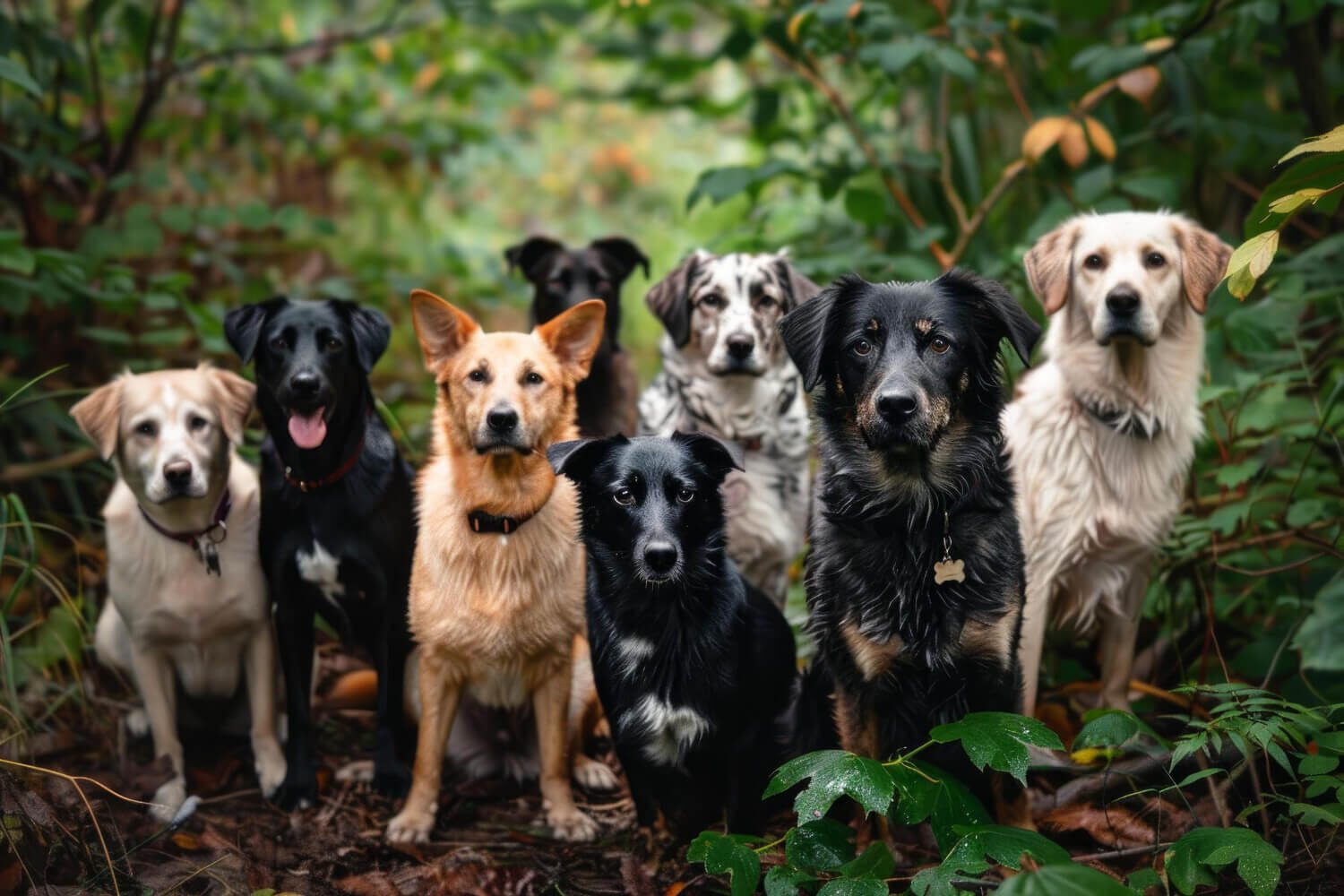Can We Pet Tortoise in India? A Comprehensive Guide
Since many of its species are protected by the Wildlife Protection Act of 1972, being able to keep a tortoise as a pet in India may be enjoyable, and one must understand the law on this. Their welfare lies in choosing the correct species, such as Russian or red-footed, with a spacious, sanitary housing. Tortoises, because they can survive up to decades, should therefore have an owner ready for the long haul. They can offer special friendship and a deeper understanding of animals with proper care and dedication.
Can We Pet Tortoise in India?
There is a lot of ethical and legal information in keeping tortoises as pets, especially in India. Tortoises of quite a few species receive protection under the Wildlife Protection Act of 1972. According to this very act, there are particular species of wildlife that no one can capture, or trade, or keep ownership of without due permissions in place. Future tortoise owners should therefore identify the legal status of the species they wish to save and obtain the required licenses to avoid legal implications.
There are also other duties associated with owning tortoises beyond the legal obligation. The owner must ensure that the habitat for the tortoises is sufficient for their nutritional and environmental needs, which can be quite extensive depending on species. Tortoises have long lives, so owners have to make plans for a long time. It is very important that tortoises to be purchased come from responsible breeders or rescue organizations that fulfill legal obligations, ensuring the animal was obtained in a morally appropriate and legal manner. In doing so, responsible and wise persons may contribute to wild-life conservation efforts while finding companionship with these endearing tortoises.
Types of Tortoises You Can Legally Pet in India
Since the Wildlife Protection Act of 1972 prohibits the collection, trade, and possession of several native species, the majority of the tortoises that are permitted as pets in India are non-native species. For example, because of its endangered classification, the Indian Star Tortoise is prohibited from being owned or traded without special permits. However, if obtained from reliable breeders or importers who adhere to the correct legal procedures, certain non-native tortoise species—which are not protected by the Act—can be lawfully kept as pets. Verify a tortoise’s legal status and make sure its source is both morally and legally acceptable before purchasing one.
Several tortoise species, such as the Russian, Red-Footed, and Sulcata tortoises, are typically regarded as appropriate and acceptable in India. Beginners will love the Russian tortoise because it is small and resilient. The vibrantly marked Red-Footed Tortoise can adapt well to captivity and thrives in warm, humid environments. One of the largest species of tortoises, the Sulcata, may also be a great companion for seasoned owners with plenty of space. Selecting an animal species that is legal guarantees responsible pet ownership and aids in wildlife conservation.
How to Care for a Pet Tortoise?
Turtle care requires a clean environment and a nutritious feed. Tortoises require a big enclosure with plenty of room to move regarding in, as well as hiding areas, rocks, and logs for foraging. They need ultraviolet (UV) rays and a suitable temperature for assistance in the production of vitamin D3, which is vital to building strong bones. For the majority of portion, tortoises eat leafy greens including dandelion, collard greens, and kale, with the strange delight of fruit. Taking supplements containing calcium will support strong bones and shells. Your turtle’s perpetual health will be ensured by regular inspections with a reptile veterinarian as it grows and flourishes in its environment.
- Provide a spacious enclosure.
- Ensure proper lighting and heat.
- Create hiding spots in the enclosure.
- Feed a balanced diet of leafy greens.
- Add calcium supplements for shell health.
- Schedule regular vet check-ups.
Challenges of Owning a Tortoise
There are certain difficulties with owning a tortoise that need to be carefully considered. Given that they frequently live for several decades, tortoises require a sustained commitment from their owners. Additionally, they require particular climatic conditions that can be expensive and time-consuming to maintain, such as UVB lighting, heat control, and lots of room. To prevent illness, their diet has to be varied and adequate, involving regular access to fresh leafy greens and calcium supplements. In addition, not all vets have the ability to treat reptiles, making it challenging to locate specialized veterinary treatment. Legal limitations may also impact tortoise ownership and access to specific species for those living in areas with stringent animal conservation regulations, like as India.
Long Lifespan: Tortoises need a long-term commitment because they can live for decades.
Specialized Habitat Needs: They require large cages, UVB illumination, and heat control.
Proper Diet: To preserve their well-being, tortoises require a diverse diet containing leafy greens and calcium supplements.
Limited Veterinary Care: Health care for reptiles might be difficult because not all vets specialize in them.
Sensitivity to Stress: Abrupt changes in their surroundings or nutrition can cause stress in tortoises.
Legal Restrictions: Access to some tortoise species may be restricted by wildlife protection legislation in some areas, such as India.
Should You Keep a Tortoise as a Pet?
Keeping a tortoise as a pet is a big commitment that needs to be carefully thought out, taking into account both the advantages and the duties. As unusual animals that provide a feeling of peace and a connection to the natural world, tortoises appeal to people seeking a low-maintenance, peaceful companion. Owners may find their intriguing personalities and actions to be endlessly entertaining. But they also need special attention, which includes a large, safe habitat, UVB illumination, and temperature control. A lifetime commitment, tortoises can outlive their owners due to their extended lifespan, which frequently exceeds several decades.
Additionally, because tortoises have very specific dietary needs—they need a range of fresh greens and occasionally supplements—maintaining a nutritious diet is essential to their wellbeing. Because not all vets specialize in reptiles, it can be difficult to find appropriate veterinary care, which can exacerbate existing health problems. Since many native tortoise species in India are protected by the Wildlife Protection Act of 1972, ownership is made even more difficult by legal issues. This implies that potential owners should make sure they are only purchasing non-native animals from reliable sources and are aware of the legal limitations. A tortoise can be a fulfilling and cherished companion for those who can and are willing to devote the required effort, energy, and money to its upkeep.
FAQs About Can We Pet Tortoise in India
Q1. What are the consequences of owning a tortoise illegally in India?
In India, unlawful tortoise ownership carries serious legal repercussions, including heavy fines and possible jail time under the Wildlife Protection Act of 1972. The catch, sale, and ownership of several protected species are expressly forbidden by this act, and infractions may result in fines that vary according to the seriousness of the transgression. The unlawfully possessed tortoise may be confiscated by authorities and either placed in a rescue facility or returned to its native environment, in addition to facing legal ramifications. Furthermore, having a tortoise without knowing its legal status and care needs might result in subpar living conditions that are detrimental to the health and welfare of the animal. Thus, it is essential that potential tortoise owners understand the law and make sure that it is followed in order to prevent these serious consequences.
Q2. How do I ensure that the tortoise I buy is legally sourced?
Start by learning which species are allowed to be owned in your area, paying particular attention to non-native species such as the Red-Footed tortoise or Russian tortoise, to make sure the tortoise you purchase is sourced lawfully. Always buy from trustworthy breeders or animal shelters who can offer proof of the tortoise’s legal status, such as licenses or certifications attesting to its legal breeding or acquisition. Since ethical sources would keep their animals in healthy habitats, it is advisable to visit the breeder’s or rescue’s facilities to see the living conditions of the tortoises. Speaking with veterinarians or specialists in reptile care can also help you find reliable sources and guarantee that you make an informed choice. By following these guidelines, you can get a tortoise that conforms with legal regulations and supports ethical animal ownership.
Q3. Can I buy a tortoise from a pet shop in India?
Purchasing a tortoise from a pet shop in India requires careful consideration of legal and ethical factors. While some shops may offer tortoises for sale, it is crucial to confirm that the species is legal and ethically sourced, as many native tortoise species are protected under the Wildlife Protection Act, 1972. Before buying, ensure the pet shop complies with local wildlife laws and ask for documentation verifying the tortoise’s legal status. Inspecting the living conditions of the animals is also important to ensure their health and well-being. If there are any uncertainties about the legality or sourcing of the tortoise, it’s advisable to consider reputable breeders or rescues, which are more likely to follow proper regulations and care standards.
Q4. Which tortoise species can I legally keep as a pet in India?
In India, several non-native tortoise species are generally permissible for pet ownership, provided they are legally sourced. Popular options include the Russian tortoise (Testudo horsfieldii), known for its hardy nature and compact size; the Red-Footed tortoise (Chelonoidis carbonarius), appreciated for its striking coloration and friendly temperament; the Sulcata tortoise (Centrochelys sulcata), which is one of the largest species and requires ample space; and the Greek tortoise (Testudo graeca), favored for its manageable size and attractive shell patterns. Before acquiring any tortoise, it’s essential to confirm the legal status of the species and ensure that it is sourced from reputable breeders or rescues to promote ethical practices and compliance with wildlife laws.
Q5. Do I need a permit to own a pet tortoise in India?
Permit requirements for pet tortoises in India vary depending on the species. Capturing or selling native tortoise species without the required authority is prohibited by the Wildlife Protection Act of 1972, which protects many of these species and requires special permits for ownership. In contrast, non-native species, like the Red-Footed or Russian tortoises, usually do not need licenses to be owned as long as they come from reliable breeders or rescues that abide by local wildlife laws. If you have any questions concerning the permitting process, it is crucial to check the precise legal requirements for your area and the species you want to preserve. You should also speak with local wildlife officials.
Conclusion
Being a long-term companion and having a special connection to nature are two benefits of owning a tortoise. Nonetheless, the legal, moral, and practical obligations associated with tortoise ownership must be carefully considered. In order to ensure that any animal maintained as pets is ethically and legally sourced, prospective owners in India need to be informed of the wildlife protection rules that regulate tortoise ownership. Owners can satisfy legal requirements while enjoying the company of these interesting animals by selecting non-native species, such as the Russian or Red-Footed tortoise.
Furthermore, it is essential to comprehend the unique care requirements of tortoises, including their nutritional demands, habitat requirements, and health issues, in order to ensure their well-being. A tortoise can become a treasured member of your home and enhance your life with its distinct personality and charm provided you prepare it properly, are dedicated to it, and follow wildlife regulations. Make wise choices and put your pet tortoise’s wellbeing first as you set out on your adventure.











